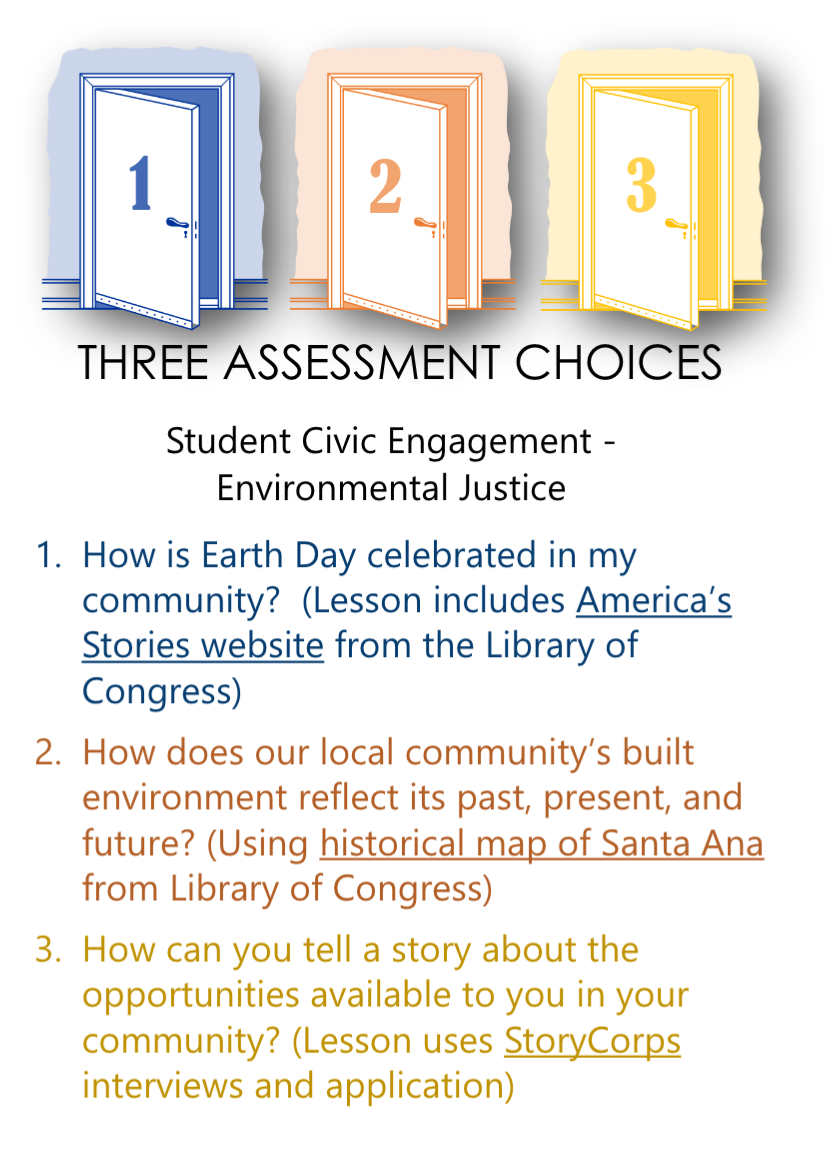Using Assessments to Engage Students
By Nicole Gilbertson
August 24, 2020
This article originally appeared in the California History-Social Science Project magazine, The Source. View the PDF here.
Remote teaching brought many challenges for teachers to meet the needs of their students, and teachers had many innovations to meet these needs. In my conversations with teachers, the most common questions and concerns were, How do I keep students engaged in our online learning context? and, How can I assess my students remotely? One solution to these two challenges is choice board assessments, a strategy shared with me by two teacher leaders from La Paz Intermediate, Tammy Black and Trish Jorquiera. Choice boards allowed for student differentiation as they grappled with a standard distance learning curriculum.
A choice board is an assessment activity that provides students with options in the type of assignment that they will complete to demonstrate her learning, this allows for differentiation in student output. In this way, the teacher effectively communicates to students that there are a variety of ways that students can express their learning and, additionally, this approach supports student engagement in the learning process. For example, at the start of the year, an elementary teacher integrating environmental literacy into her classroom may want to assess students learning around the question, In what ways have students been civically engaged in environmental justice in the past and present? To do so she can give students three options for answer the question on a choice board assignment. One option, could be to investigate how students have participated in and shaped Earth Day events in the past and in their community.

A second option, could be to ask students to use maps of their community’s built environment to consider how it has changed over time. Students then develop a plan for how they can improve one aspect of their community. A third choice, would allow students to consider StoryCorps oral histories as a way to learn about how to tell a story about their communities. Each of these activities asks students to engage with sources, make connections between the past and their lives, and provides an opportunity for community action and self-reflection. Teachers can then use this assignment as a starting point to create a class discussion of how they see themselves engaging in and impacting their local environment. Jay McTighe and Ken O’Connor state, “Assessment becomes responsive when students are given appropriate options for demonstrating knowledge, skills, and understanding. Allow choices—but always with the intent of collecting needed and appropriate evidence based on goals.”[1] Choice boards offer flexibility for students, while providing teachers with assessment data to help inform future instructional decisions. This allows teachers to consider whether the learning goals have been met or if we need to review or revisit the skill or concept in a future unit.
Choice boards give students the opportunity to show what they have learned, practice a new skill, and create something based on their learning. Guiding each of the choices for the assignment are some common objectives:
- Students respond to a question aligned to the inquiry question that guides instruction.
- The task we construct measures the content and skills that meet our learning objectives.
- Tasks are equally weighted, students who choose each type of task should be providing similar amounts of effort.
Nicole Gilbertson also conducted a workshop, “Assessing Student Learning,” as part of the UCI Teacher Academy’s 2020 Professional Development Summer Series. To view the workshop, click here.
[1] Jay McTighe and Ken O’Connor, “Seven Practices for Effective Learning” Educational Leadership, November 2005 Volume 63, Number 3 Assessment to Promote Learning Pages 10-17, http://www.ascd.org/publications/educational-leadership/nov05/vol63/num03/Seven-Practices-for-Effective-Learning.aspx, accessed on July 13, 2020.

Nicole Gilbertson is Co-Director of the UCI Teacher Academy and Director of the UCI History Project.
